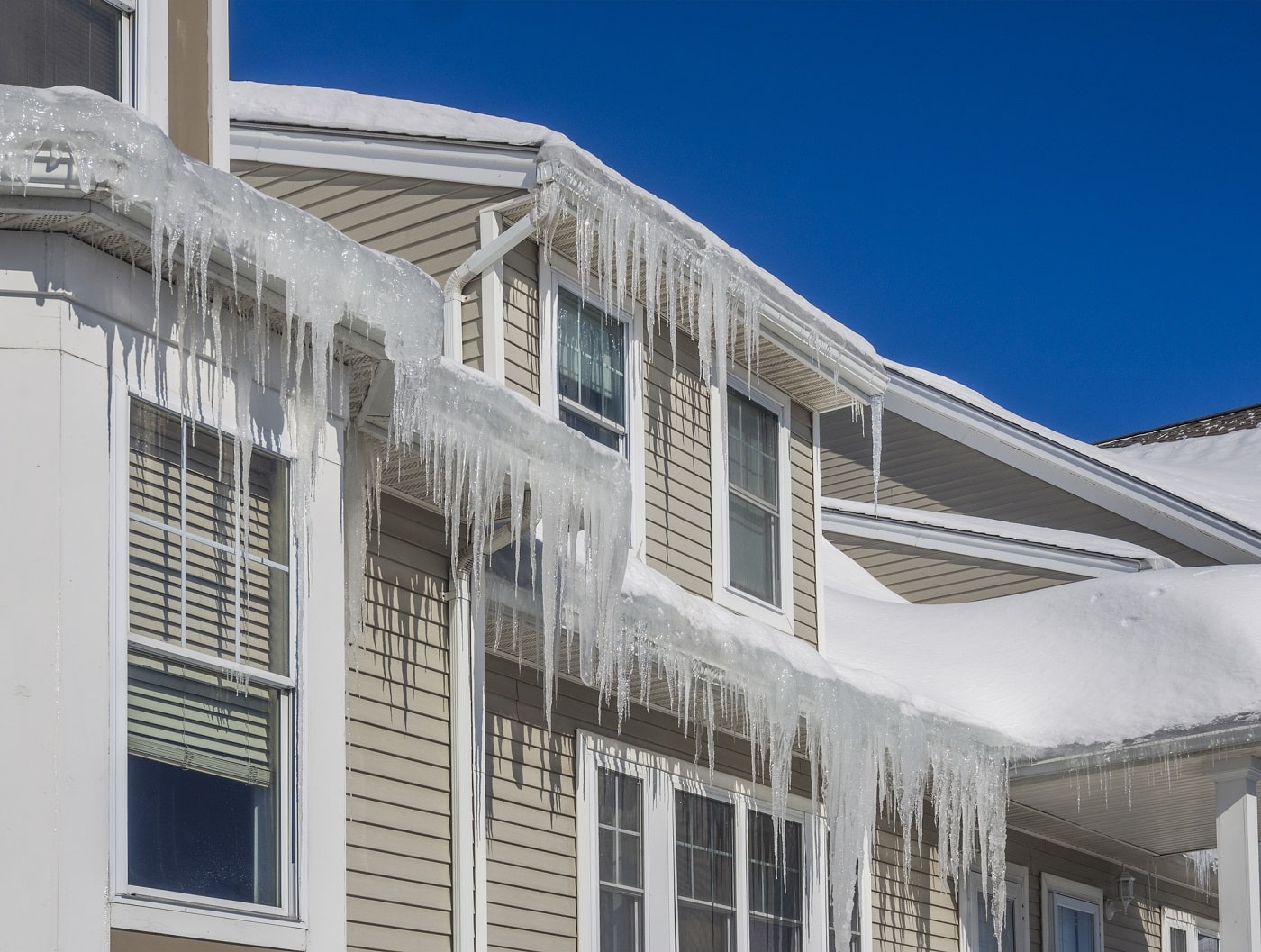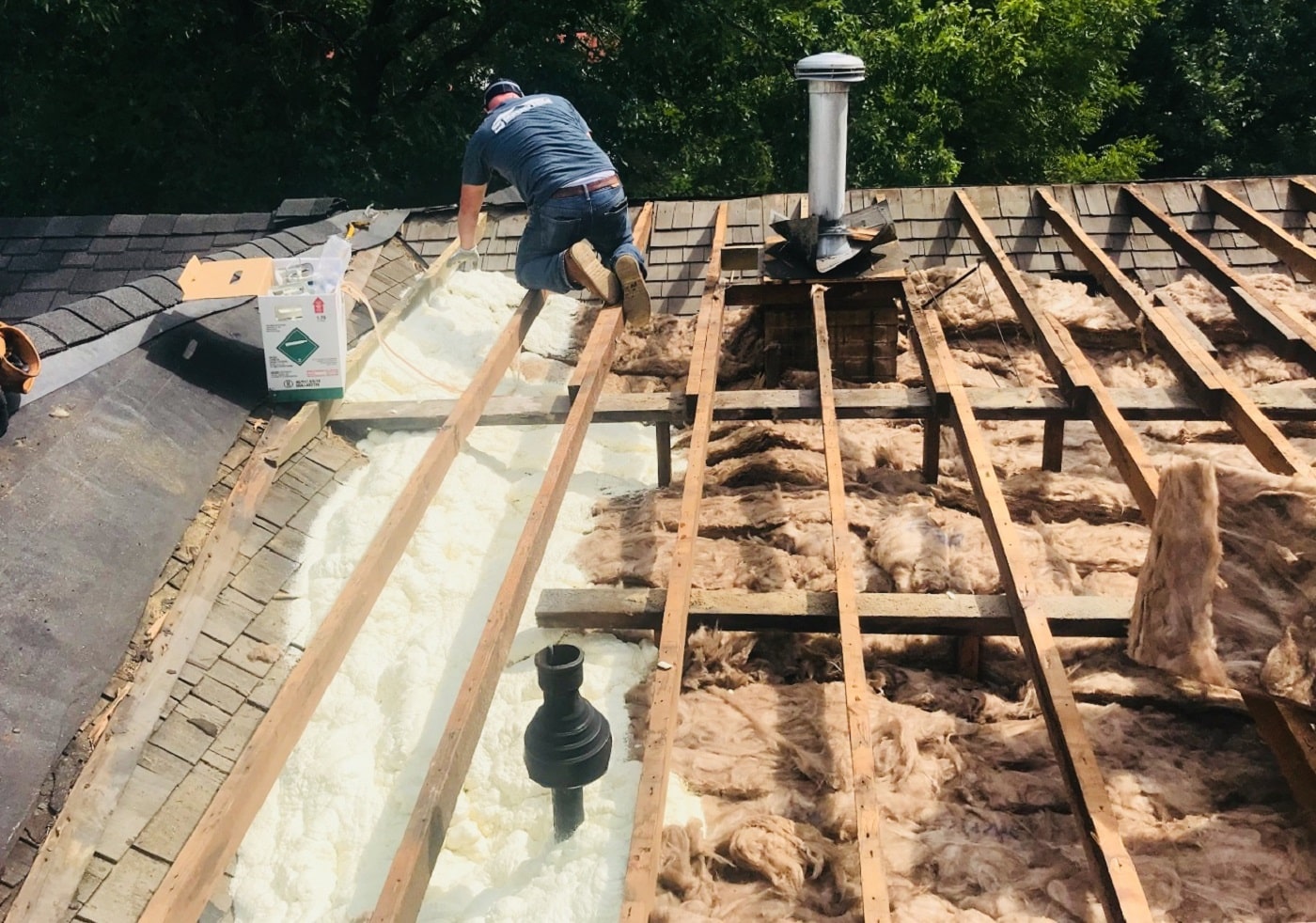Exploring the Science Behind Ice Dams
Our team answers homeowner questions every weekend on WCCO 830 AM from 9:00 am-10:00 am. Have your most pressing home improvement questions answered by calling or texting 651-989-9226. Here’s must-know information from Barry Stranz (professional & educator) who has 30+ years in the home improvement industry shared on 12.14.19.

There are always two issues that cause ice dams. They are a lack of insulation and ventilation. One of the most visible ice dam warning signs is a high volume of icicles on your roof edge. Story and a half homes have a heightened risk for ice dams because of their architecture. Homeowners with ice dam issues often notice that their lower level living areas are colder than upper levels. Story and half homes built in the 1980’s face a unique challenge because the roof trusses provided minimal space for insulation, particularly near the outside walls. Oftentimes, blown-in cellulose was used and many homes could have benefited from additional insulation at the time of installation. Without enough insulation, the home’s internal heat migrates up from convection to the top of the roof, providing that area with the highest concentration of warm air. This means that a sizable amount of heat is working its way through the assembly of the insulation up past the decking an onto the roof surface, melting the snow cover exacerbating an ice dam problem. Working with a reputable contractor that uses diagnostic testing, such as FLIR imaging, can allow them to identify temperature differentiations within your home, pinpoint the source, and propose steps towards addressing the situation.
Learn More About the Diagnostic Testing Contractors Use to Pinpoint Home Energy Deficiencies:
In story and a half homes, the best method for addressing ice dams is the creation of a hot roof. To create a hot roof, insulation is installed near the roof sheathing and is closed off to outside air flow. When compared to vented roofs, hot roofs have a slightly higher roof temperature. When an attic is filled with spray foam insulation to produce a hot roof, the attic’s temperature rises because the thermal envelope is shifted underneath the roof, due to ventilation being absent. The creation of a hot roof equates to energy savings because a home is prevented from leaking air through the roof.

When it comes to building sciences, many professionals hold the belief that homes are too tight today, which has led to the creation of moisture and mold problems. Even though historic homes rarely have moisture and mold issues, houses are not meant to breathe through their walls and attic spaces, as was the case with historic homes. A common characteristic of turn of the century homes is that their doors and windows lacked adequate weatherstripping. This meant the average 1000 square foot home in 1900 would have the equivalent of two whole house air changes per hour due to leaky windows, doors, and attics. Once this was recognized, building code changes were implemented.
However, as the level of insulation and air sealing in exterior walls began to increase, the ability for walls to breathe was compromised. Water vapor within the home began to rise to the attic space. Without the ability for water vapor to exit the attic, frost begins to form. Once temperatures rise and the frost melts, it dampens the home’s insulation, rendering it useless. In addition, the home’s air quality is comprised.
To circumvent this issue, air exchange systems were introduced. Heat recovery ventilators are systems that ventilate the house, while gaining the heat back. This happens when outgoing air which was warm gives its heat to the fresh air coming in. As that air exchanges, the result is preheated fresh air coming into the home, lowering the strain on the furnace.
Listen to the Entire Show Here:
